To Go Where No Tripod Dares
Next to a camera, a tripod is the landscape photographer’s best friend. It holds the camera steady so you can control your exposure and composition. What if you want to photograph a landscape from a place where using a tripod is not feasible, like a kayak? I’ve often said that the best way to see the New Jersey Pine Barrens is from our narrow and twisting rivers. The problem is being able to create landscape photographs from those rivers.
Getting to the river’s edge on foot can be difficult. It can require bushwhacking skills and a tall pair of waterproof boots. Plus the best compositions seem to be from the water, which means shooting from a boat. Getting carefully composed and sharp landscapes from a kayak or canoe is difficult if not impossible. Photographing on a shady river requires camera settings that will limit sharpness. A slow shutter speed can cause photographs to be blurry from camera shake or the boat bobbing up and down. Wide apertures limit depth of field so not everything will be in focus. Shooting with a high ISO will create noise that also degrades sharpness, although this is improving all the time with newer cameras. All this limits you to photographing in places where you can land and get out of your boat to setup a tripod.
No Tripod No Problem
Technology to the rescue. One technical innovation in photography that I’ve ignored is image stabilization. Image stabilization compensates for camera shakes and movement when hand holding a camera during longer exposures. It can create sharp photographs that would be blurry without it. Image stabilization is unnecessary for a landscape photographer working with a tripod that holds a camera perfectly still. However, from a kayak, it is a game changer that allowed these photographs to happen.
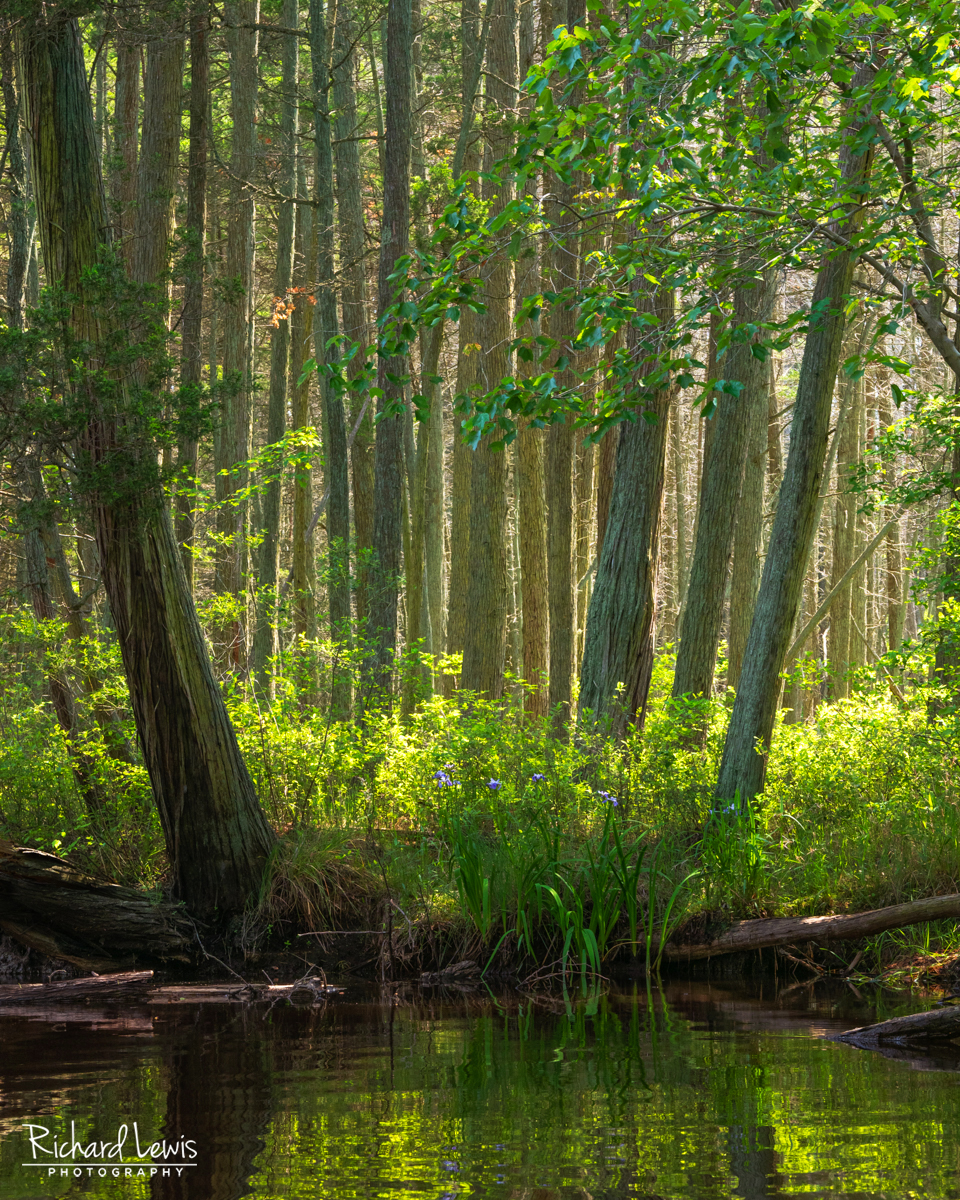
River Light 2 by Richard Lewis 2020 – 1/40th Sec @ f/9 ISO400, 82mm lens equivalent
I spent a day paddling on the Batsto River which is one of the most scenic rivers in the Pine Barrens. It was partly cloudy so the light kept changing in interesting ways. It took practice and experimentation, but I figured how to take advantage of this beautiful light.
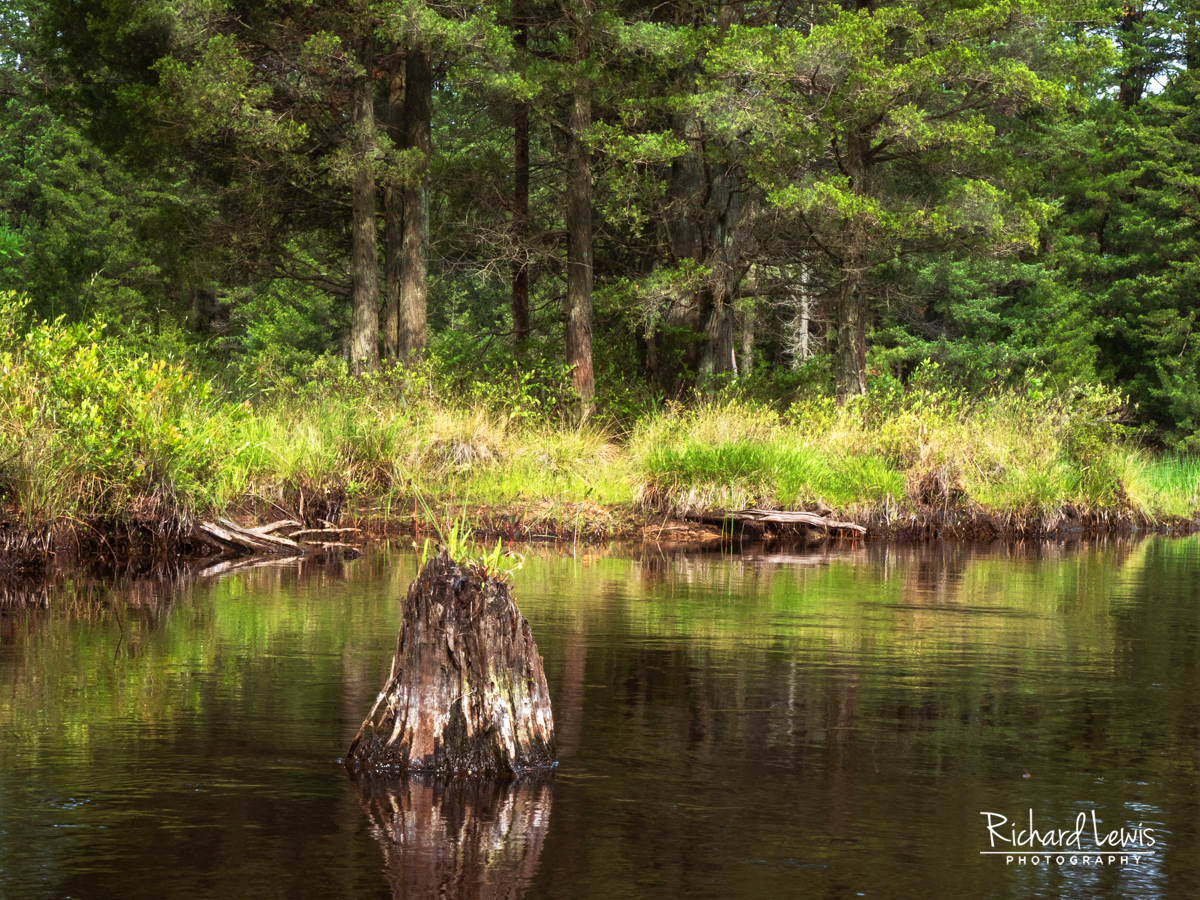
River Light 1 by Richard Lewis 2020 – 1/40th second @ f/16 ISO 400, 82mm lens equivalent
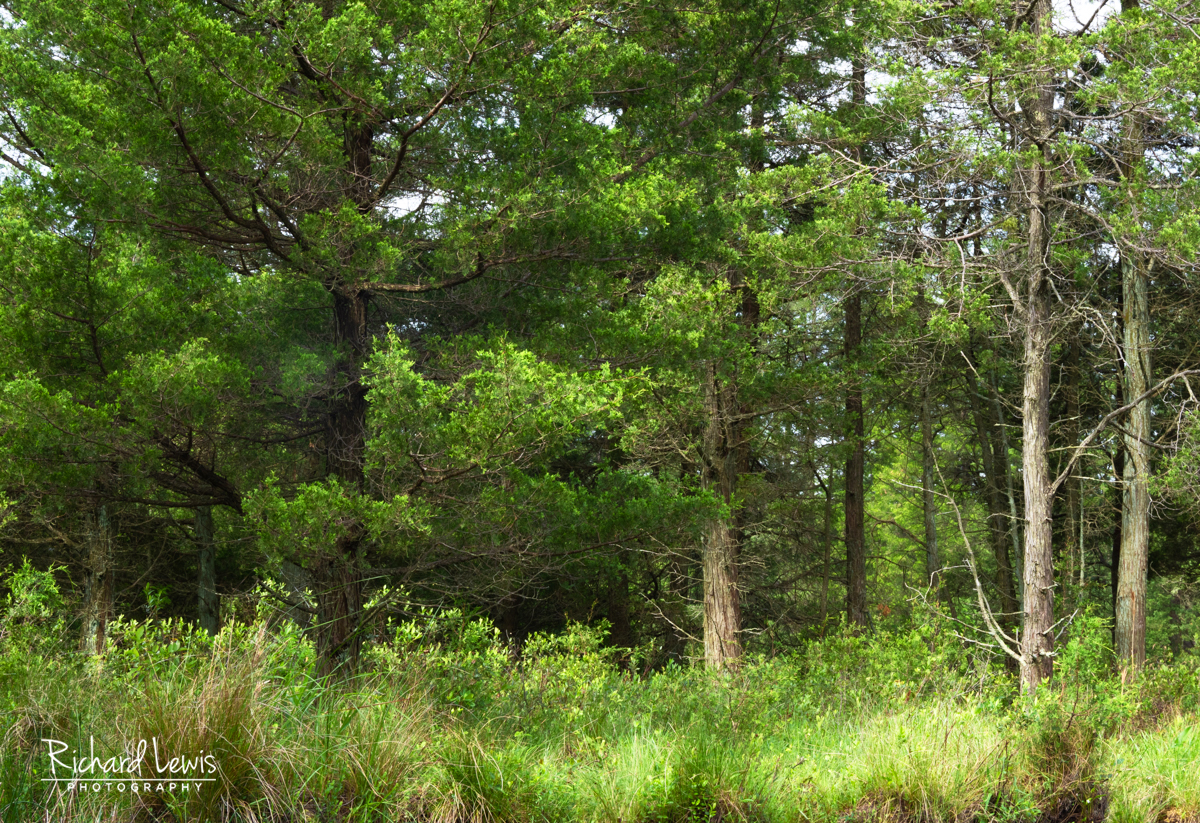
Along The Batsto by Richard Lewis 2020 – 1/25th second @ f/16 ISO 200 85mm lens equivalent

River Light 8 by Richard Lewis 2020 – 1/13 second @ f/13 ISO 400, 56mm equivalent
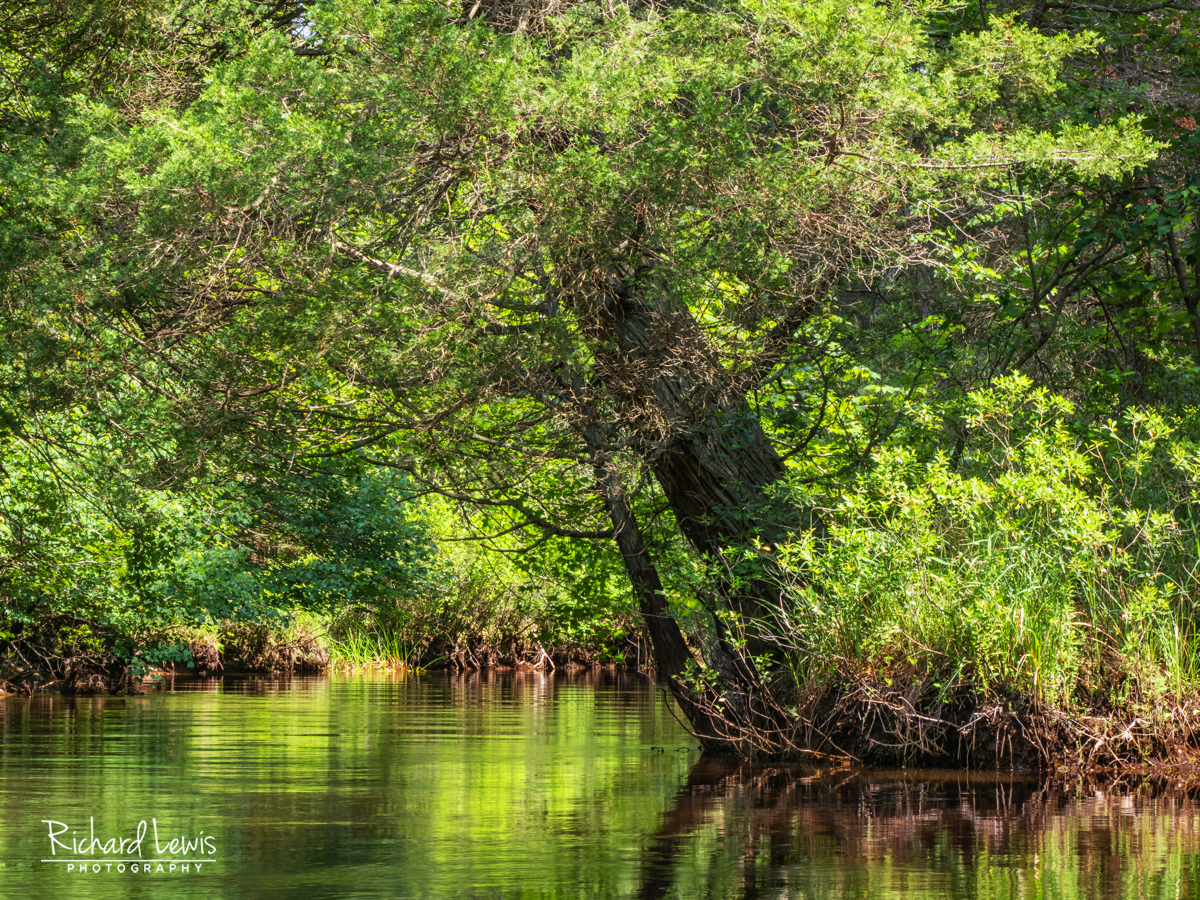
River Light 3 by Richard Lewis 2020 – 1/13 second @ f/16 ISO 400 108 mm lens equivalent

River Light 7 by Richard Lewis 2020 – 1/20 second @ f/16 ISO 400, 94mm lens equivalent

River Light 5 by Richard Lewis 2020 – 1/8 second @ f/16 ISO 400, 70mm lens equivalent
Because I had no idea how this little experiment would work, I had a small hiking tripod onboard. It did come in handy for these two images which were made where the shoreline was accessible and I could beach the kayak and photograph from solid ground.
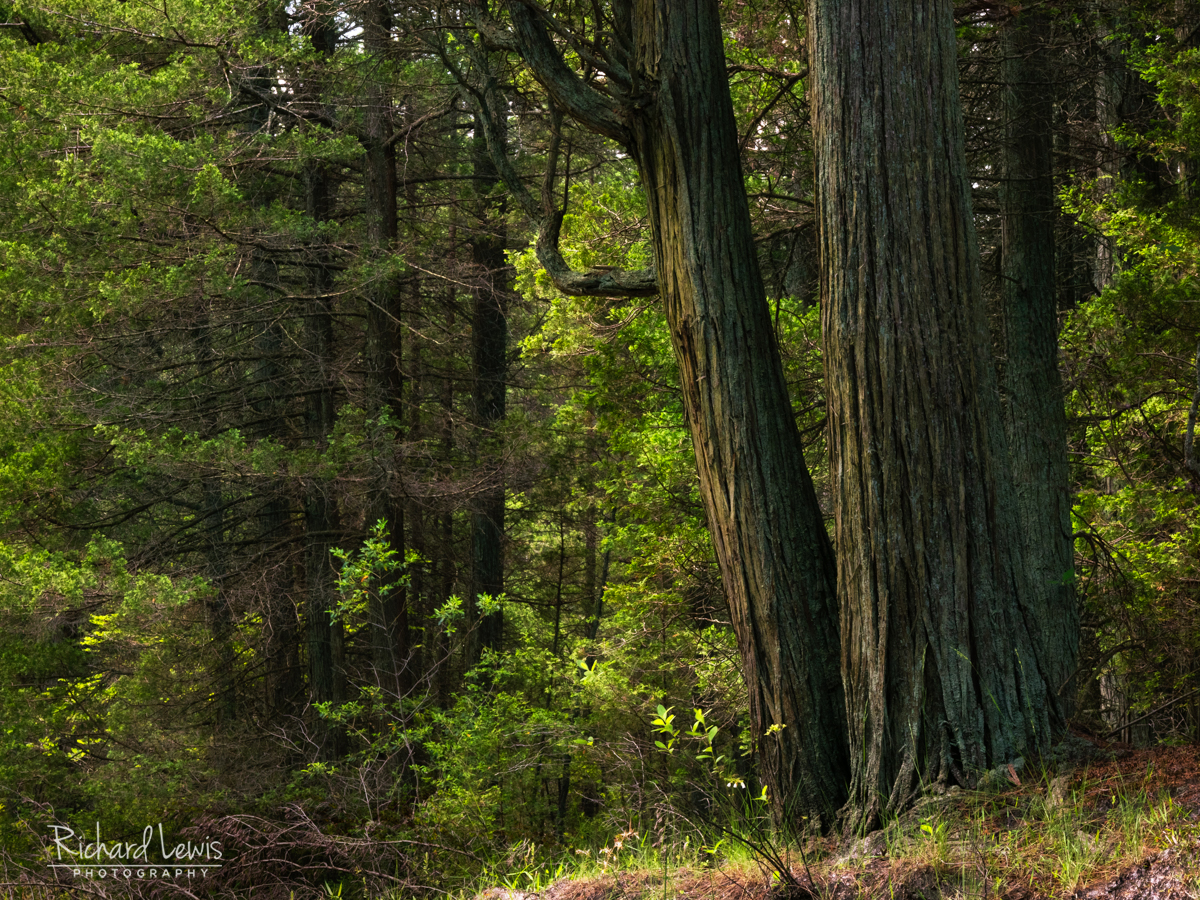
River Light 4 by Richard Lewis 2020 – 1/10 second @ f/16 ISO 200, 108mm lens equivalent, tripod

River Light 6 by Richard Lewis 2020 – 1/25 second @ f/8 ISO 200, 100mm lens equivalent, tripod
Don’t miss the little things
These little carnivorous plants are called Sundews. They like to feast on our local bug population. Since we like anything that eats the abundant bugs around here, Sundews are a favorite. They usually grow along the ground in wet and marshy areas, but on one stretch of the river they were growing, and thriving on downed tree trunks.
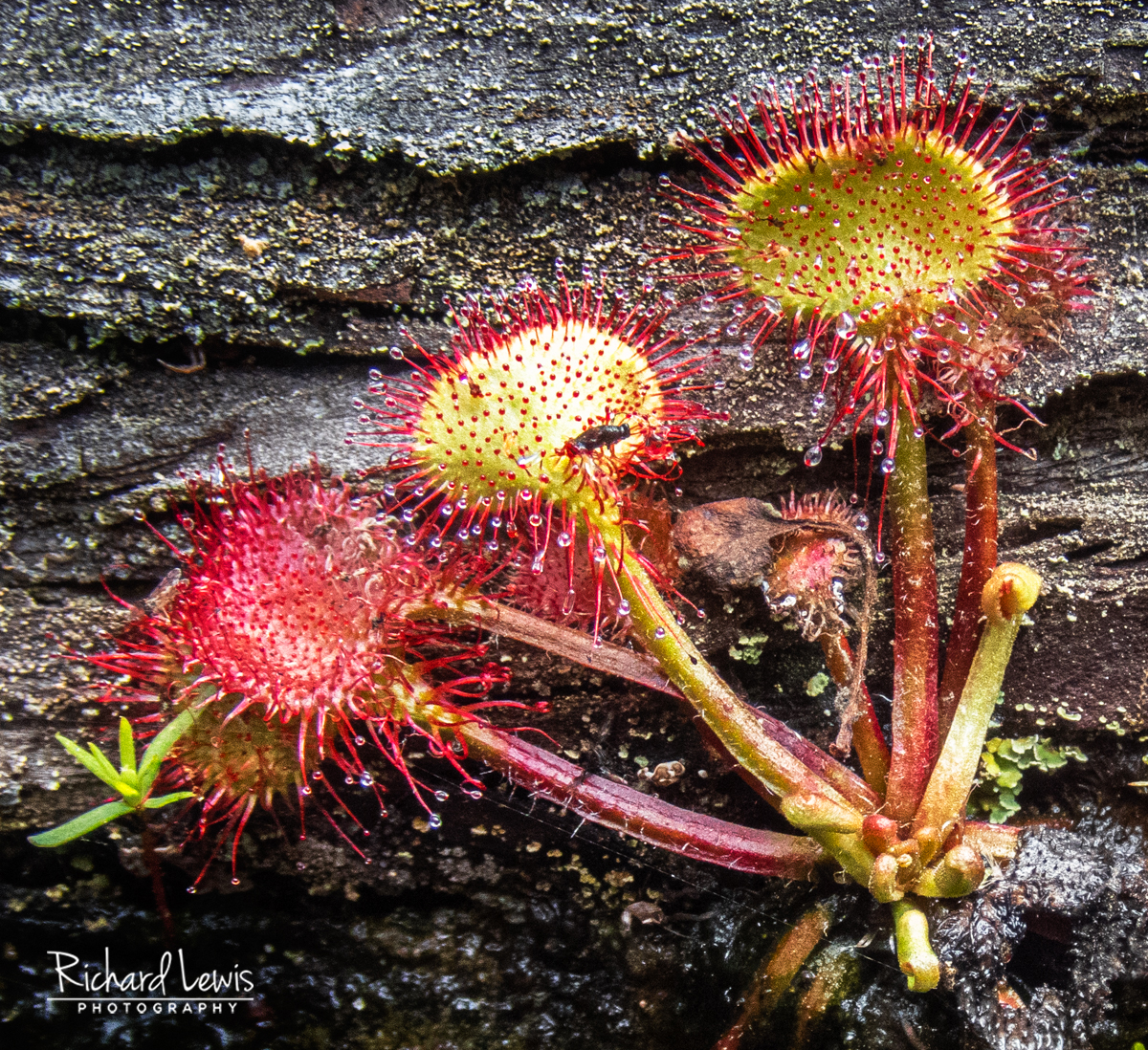
Life And Death On A Log by Richard Lewis 2020 – 1/200 sec @ f/4 ISO 400, Macro
This is a whole new way to photograph the New Jersey Pine Barrens and these images are only the beginning. I plan to head out on the rivers again during this and other seasons to share one of the most unique areas of this unique environment.
NOTES
- All photographs except the last one were made with an Olympus EM-1 Mark II camera with a 12-100mm f/4 lens. All the lens equivalents are for full frame.
- The last image was shot with an Olympus TG-6 point and shoot camera.
- All photographs except where noted were made handheld from a kayak.
Enjoy!
See other landscape photography made from solid ground

Great imagery!
Thanks Rich!
Love your photography. Thank you so much for sharing. Jon
Thank you Jon. I’m glad you enjoyed these photographs.
Holy moley… who would have thought…. 1/25, 1/13… even 1/8… hand held. The stabilization on that camera is outstanding!!! Have you thought of shooting the Rancocas also?
That was a bit scary when the shutter speeds got slower and slower. Everything looked sharp on the LCD, but I thought I’d get home and see that everything was a big blur on the big screen. That darn little Olympus did what it was supposed to do. Impressive! I haven’t been on the Rancocas in a long time. It’s a very different waterway from the Batsto so now you got me thinking…
Wonderful images. My favourite is the second image, the vertical one. I also liked the final image. I have never seen those plants. Fascinating. I will need to keep my eye out for them. Do you waterproof your camera in any way? I get anxious even taking my camera near the water let alone into it.
Thanks Laura. I like that photograph too. The light was stunning and I’m glad I figured out how to capture it from the boat.
Sundews are amazing little plants. They grow in wet grassy areas and sometime along the edges of lakes and ponds. If you are planning on coming to the area, let me know and I’ll give you some locations where you can see them.
The two Olympus cameras I used on this trip are very water resistant. The one I used to photograph the sundews is actually waterproof. When I kayak I keep the camera gear in a waterproof bag on the deck of the boat. I also don’t change lenses when I’m out on the water.
Your photographs give a wonderful sense of place. Thank you!
Thank you Mike. I’m glad you enjoyed these.
Ok so I wrote a long..ish message on your blog but it went off into cyberspace..gist of it was that your images of this Batsto area need to be viewed in big screen mode to appreciate the depth, colour, sharpness and visual nuances that are so characteristic of your work. Not to mention the fact I envy you kayaking through such bio diverse countryside. Fabulous shots. Your number 1 fan from Seffrika and you have a few…Rudes.
Thank you Rudi. It’s always a pleasure to share my world with friends like you who live so far away. We’ll just have to get you up here sometime to and get you into a kayak. I’ve got an extra one.
Great article, great shots I’m glad you are appreciating the Olympus IS.
Thanks Lou. Olympus was just a small camera I took hiking until that day. Now I see the advantage of 6.5 stops of image stabilization.
Do you do you have any prints for sale of this area?*
I do Pat. All these images an the others on my website are for sale. Feel free to contact me for more info.
Rich, thank you for taking us along! Having paddled the Batsto, I can remember some of those spots, but I haven’t been there for over a year! So special! Thanks for your technical insights too. Your photography inspires, both to photograph more and to visit the Pines even more often! Hard to pick a favorite because each offers so much in different ways. One that stood out to me was River light 7. The flowers, that I believe are Blue Flags, give it even more special interest. The flora of the Pines is amazing and you capture it so well!
Thanks Ron. I’m glad to have you along and happy you are inspired to photograph more. I’ve been paddling more in the summer since there are less bugs on the water. I also like the River light 7. It was one of the last photographs of the day and the light coming through in that spot was amazing. After I photographed it, I had to just stop and stare until the light changed.
WOW…just WOW! Do I detect a bit of excitement in the first sentence of your last paragraph? The one where you said, ‘This is a whole new way to photograph the NJ Pine Barrens and these images are only the beginning.’ I don’t see an exclamation point, but I sure can hear it! Seriously Rich, your enthusiasm and gift of ‘seeing’ are truly inspirational…makes my heart smile! Looking forward to seeing you in October for the sunset workshop.
Thanks Jan. You are correct, I’m very excited about this. An exclamation point would have matched the way I feel. I also look forward to seeing you in the fall and appreciate your support over the years. It’s always nice to spend some time with you out in the Pine Barrens. Stay safe!
Wonderful post Rich! I enjoyed the ride and visit to the Pinelands. My favorites are River Light 4 & 5. I like the composition and how strong the cedar trunks look in 4. In 5 I like the play of light and shadow along with the strong diagonal tree.
Thanks Denise. I’m glad you enjoyed the ride. I appreciate your comments on the two photographs too. Cedar trees have been my obsession for years and I’ve made an effort recently to really photograph them and the swamp environment they grow in. Cedars now have their own gallery on my website: https://richardlewisphotography.com/galleries/new-jersey-pinelands/new-jersey-pinelands-cedar-swamps/